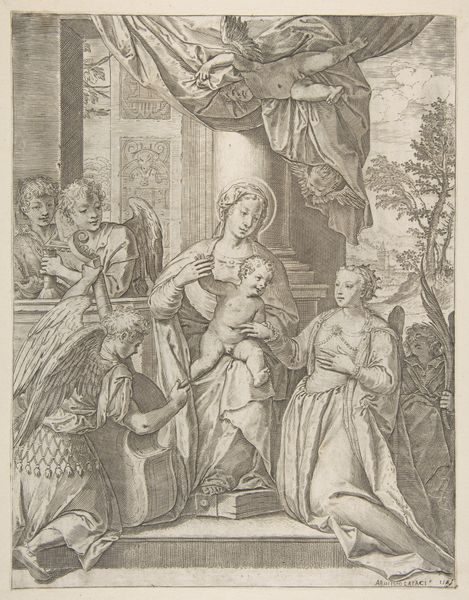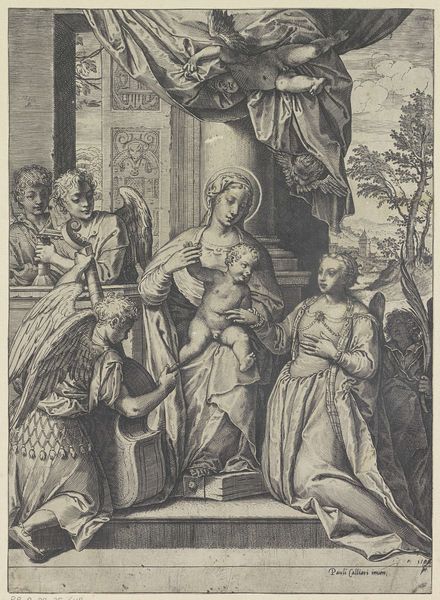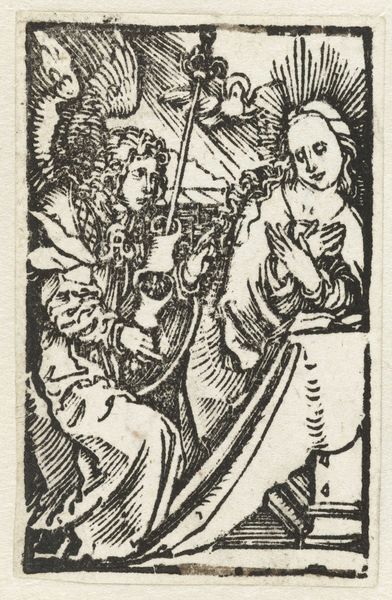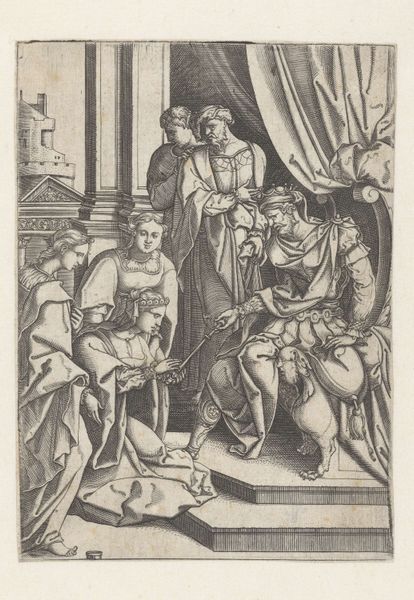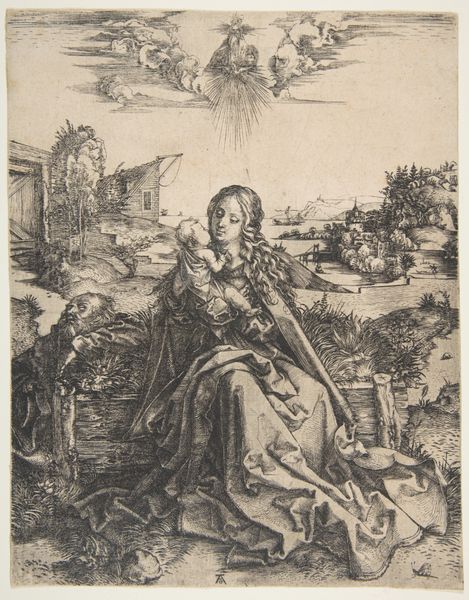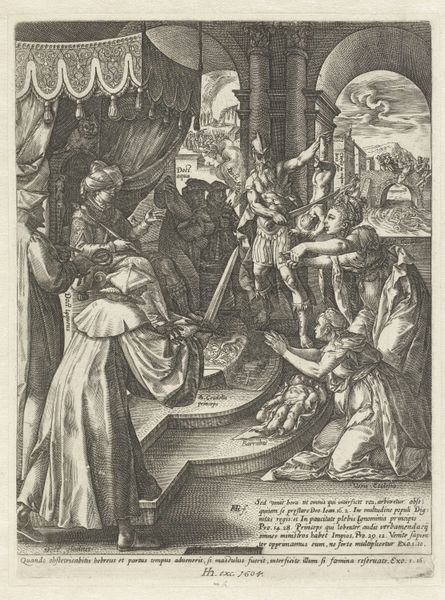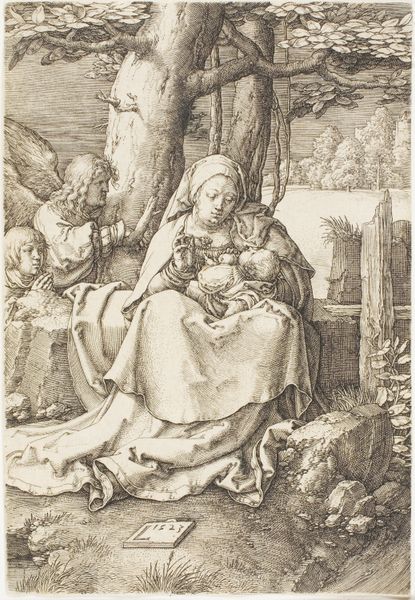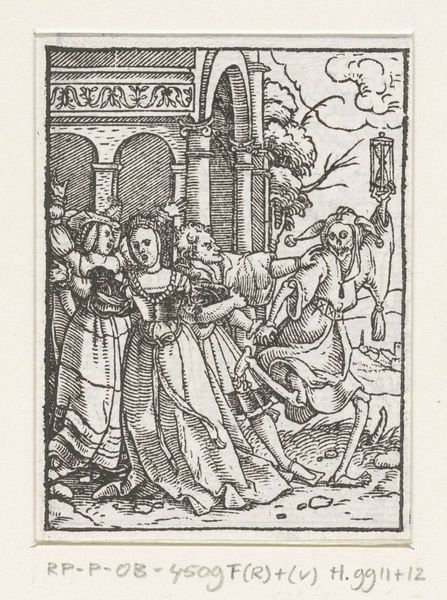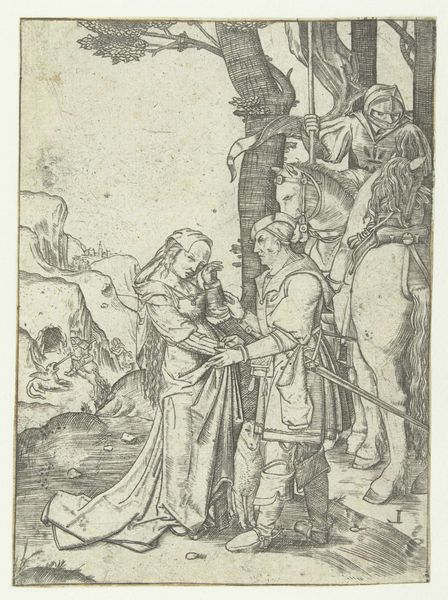
drawing, print, woodcut, pen, engraving
#
portrait
#
drawing
#
ink drawing
# print
#
pen illustration
#
pen sketch
#
landscape
#
figuration
#
woodcut
#
line
#
pen
#
northern-renaissance
#
engraving
#
virgin-mary
#
angel
#
christ
Dimensions: sheet: 8 1/2 x 5 3/4 in. (21.6 x 14.5 cm)
Copyright: Public Domain
Editor: Here we have Albrecht Durer's "The Holy Family with Five Angels," created around 1503-1504. It’s an engraving, a black and white print with intricate detail. It strikes me as both serene and a little busy, all those figures packed together. What catches your eye when you look at it? Curator: Immediately, the formal interplay of lines commands attention. Observe how Durer masterfully employs varied line weights to articulate form and space. Notice, for example, how denser, darker lines delineate the foreground figures, lending them a palpable sense of presence, whereas the ethereal, celestial realm above is rendered with a lighter, more delicate touch. This deliberate modulation contributes significantly to the work’s spatial depth and hierarchical arrangement. Do you see how the lines create texture and volume? Editor: I do. The robes, especially, look like they have real weight because of how close the lines are packed together. It almost creates shading. But what about the composition as a whole? It feels almost crowded. Curator: Precisely. This is where formalism transcends mere description. Consider the dynamic tension between the concentrated figuration and the comparatively open space above. Durer deliberately manipulates the visual field to guide the viewer’s eye. The tightly-knit group around the Virgin contrasts sharply with the expansive heavens, thus visually reinforcing the divine significance of the central figures. It is about guiding your eye around the work. Editor: That’s interesting. I hadn't thought about how the open space at the top draws you back into the detailed area. Is there something about the style of the lines themselves? Curator: Absolutely. The graphic nature of the engraving emphasizes the artifice, the constructed reality of the image. We are not simply looking at a representation, but engaging with Durer’s deliberate manipulation of the medium itself. Editor: So, looking beyond what is depicted to how it is depicted? Curator: Precisely. This reveals so much of Durer's approach. Hopefully, it has shown you how to perform an in-depth formal analysis of a work. Editor: It has given me a new lens! I see how the visual elements can speak volumes beyond the subject matter.
Comments
No comments
Be the first to comment and join the conversation on the ultimate creative platform.
